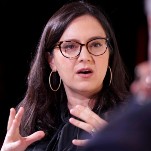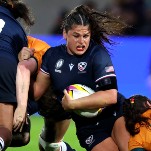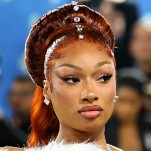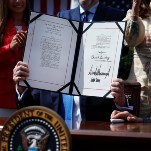A Rich Lady Has Fully Taken Over a California University Art Museum
Renaming a museum after a donor is one thing—but having to put her bad art on permanent display is just hilarious.
Entertainment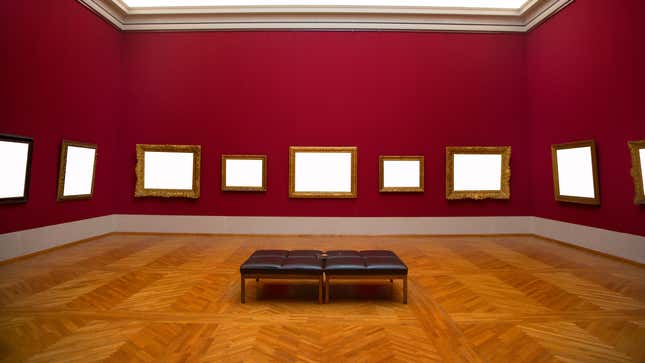

There are a couple of ways to get your name on a museum’s wall, with the most obvious approach being to create a piece of art that a museum might decide to exhibit. Unfortunately, that sometimes requires talent, but luckily, there’s always another way: You can just give the museum a ton of money.
Of course, saying “yes” to these big fat checks can backfire for some institutions—just think of all the hallowed halls currently ripping the Sackler family’s name off the walls. Now, a university museum has been accused of taking the usual cash-for-naming-rights deal even further: Not only did Cal State Long Beach reportedly rename both its university museum and a gallery within it after a donor, but the museum has added more than 150 of her (very bad) creations to its permanent collection and is currently displaying them in the gallery that bears her name. According to a report from the LA Times, the world can now see the works of Carolyn Campagna Kleefeld at the Carolyn Campagna Kleefeld Contemporary Art Museum’s Carolyn Campagna Kleefeld Gallery.
-

-

-

-

-

-

-

-

-

-

-

-

-

-

-

-

-

-

-

-

-

-

-

-

-

-

-

-

-

-

-

-

-

-

-

-

-

-

-

-

